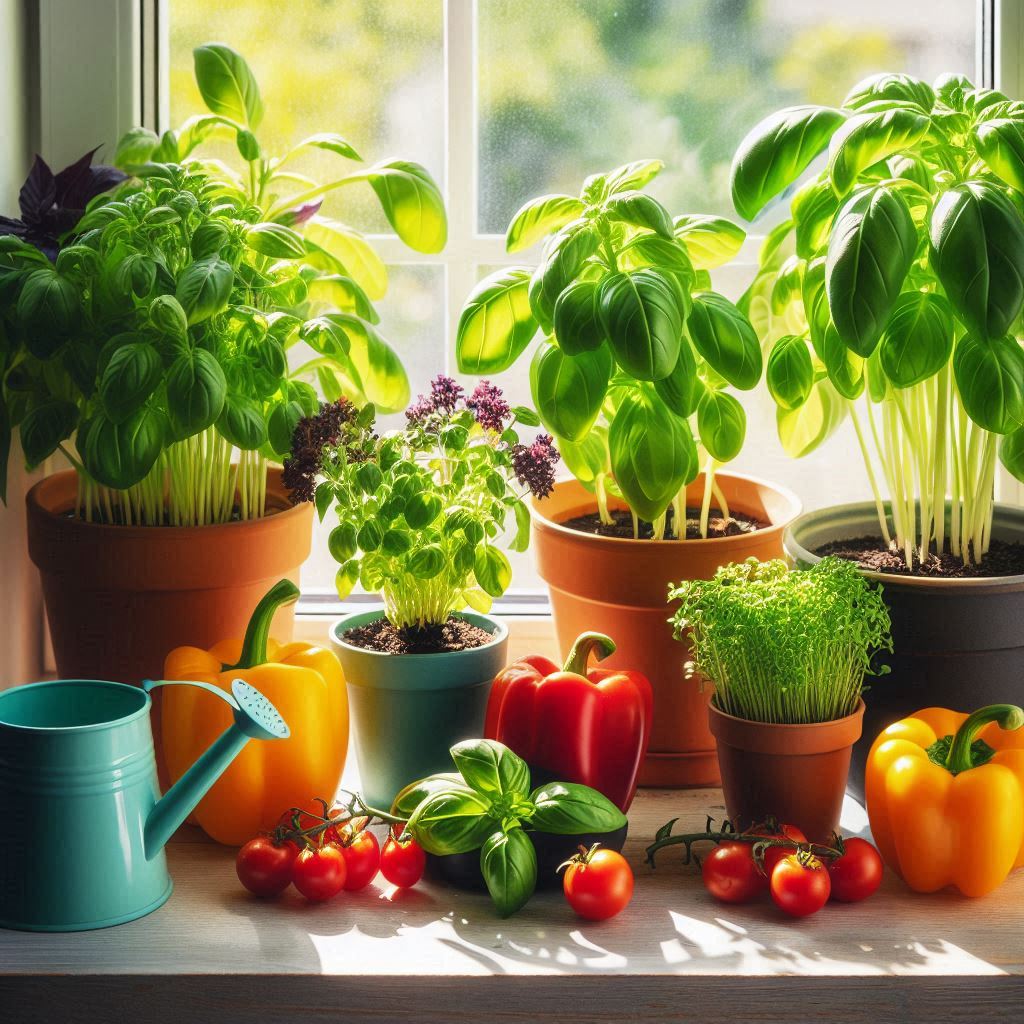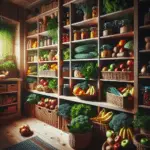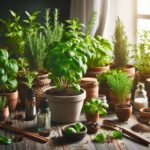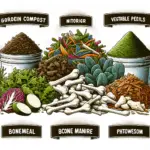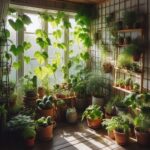1. Introduction
Growing your own vegetables at home is an incredibly rewarding experience. Not only does it provide fresh and nutritious produce, but it also brings a sense of satisfaction from nurturing plants. One of the best ways to grow vegetables in limited spaces is through container gardening, which allows anyone—from urban apartment dwellers to those with small backyards—to cultivate a productive garden.
Container gardening is particularly advantageous for those who lack traditional garden space, as it enables them to use patios, balconies, or even windowsills to create their own potted vegetable garden. Choosing the best vegetables to grow in containers can lead to a more productive and enjoyable gardening experience, allowing you to have fresh produce just a few steps away from your kitchen.
In this article, we’ll explore the best vegetables for container gardening and share some easy vegetables to grow in pots. Whether you’re looking for quick-growing vegetables, easy options for beginners, or the ideal soil for container vegetables, we’ve got you covered. You’ll learn how to create a thriving patio vegetable garden that will yield fresh veggies for your family all year long.
2. Benefits of Growing Vegetables in Pots
2.1. Space Optimization
Container gardening is the perfect solution for people who have limited gardening space, such as those living in apartments or homes with small yards. By growing vegetables in pots, you can utilize every available corner—whether it be a balcony, patio, or even a windowsill. The best vegetables for container gardening are well-suited for small areas, allowing you to create a productive garden without needing traditional garden beds. The ability to grow your own fresh produce, even in tight spaces, makes vegetable container gardening accessible to everyone.
2.2. Mobility and Versatility
One of the most significant benefits of growing vegetables in containers is mobility. Unlike traditional gardens, potted vegetable gardens can be easily moved to ensure they receive the best possible conditions. For instance, you can move your garden pots for growing vegetables to different spots throughout the day to provide optimal sun exposure or protect them from harsh weather. This versatility is a huge advantage, particularly when growing easy vegetables to grow in pots that thrive on specific amounts of sunlight or when growing veggies in pots that need seasonal adjustments to thrive.
2.3. Pests and Disease Control
Growing vegetables in containers provides better control over pests and diseases. Plants grown in planters or pots are less likely to be exposed to the same types of pests and pathogens that are common in garden soil. With container veg gardening, you can use clean potting soil specifically designed for growing vegetables in a planter, reducing the risk of soil-borne diseases. Plus, because your plants are in a controlled environment, it is easier to spot early signs of infestations and take preventative action, ensuring that your vegetable gardening in pots remains healthy and productive.
Growing vegetables in containers can bring fresh, homegrown produce into your life, even if you don’t have much space. With all of these benefits, it’s easy to see why growing a potted vegetable garden is becoming increasingly popular among urban gardeners and those looking to maximize their growing potential without a large plot of land.
3. Choosing the Right Pots and Containers
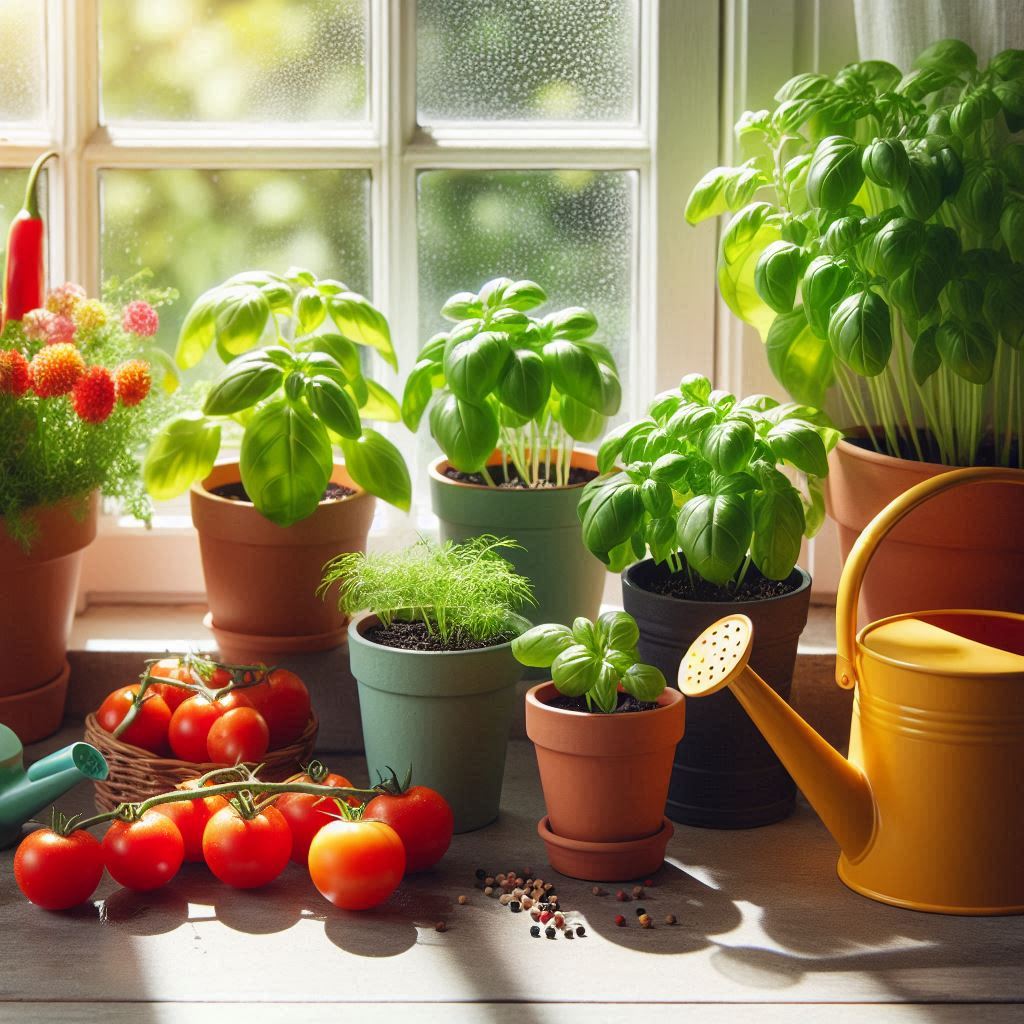
3.1. Types of Containers
When planning your vegetable container gardening project, the first step is choosing the right type of container. There are several options available, each with its own benefits. Terracotta pots are popular due to their durability and aesthetic appeal, making them great garden pots for growing vegetables. However, plastic containers are also a practical choice, as they are lightweight, retain moisture well, and are ideal for growing veggies in pots where frequent relocation is necessary. Fabric grow bags are another excellent option, offering breathability that helps prevent root rot and keeps soil for container vegetables well-aerated. Understanding the characteristics of each type will help you select the best container vegetable plants for your space.
3.2. Drainage Requirements
Proper drainage is essential for successful vegetable gardening in pots. Pots without adequate drainage holes can lead to waterlogging, resulting in root rot and unhealthy plants. The best vegetables for container gardening will still struggle without proper water management, so always ensure your chosen pots have enough drainage holes at the bottom. Growing vegetables in a planter that allows excess water to escape will provide an optimal environment for root health, ensuring that your easy vegetables to grow in pots thrive. Adding a layer of stones or gravel at the bottom of the container can also improve drainage, especially for large succulent plants that may also share container space.
3.3. Size Matters
The size of the container is another critical factor in determining the success of your potted vegetable garden. The best veggies to grow in pots will need sufficient room to expand their root system and access nutrients. Smaller pots are perfect for herbs or leafy greens, while larger vegetables such as tomatoes and peppers require deeper, more spacious containers. Growing vegetables in containers means carefully matching the plant’s needs to the pot size, which ensures they have the room to grow and flourish. Choosing a pot that is too small can limit growth, while overly large pots may make soil moisture harder to regulate, leading to uneven watering.
4. Essential Tips for Growing Vegetables in Pots
4.1. Soil and Fertilizers
The key to successful vegetable container gardening lies in selecting the right soil and fertilizers. Unlike regular garden soil, soil for container vegetables should be light, airy, and well-draining. The best potting mix is one specifically designed for containers, often a blend of peat moss, compost, and perlite or vermiculite. This combination helps retain moisture while providing the aeration needed for root health. Adding organic fertilizers can further enhance nutrient levels, providing the essential components for robust vegetable growth. When choosing the best container vegetable plants, it’s crucial to ensure that the soil provides the right balance of nutrients to keep them thriving.
4.2. Watering Techniques
Watering is another fundamental aspect of vegetable gardening in pots. Containers tend to dry out faster than garden beds, especially during hot weather, so maintaining the right level of moisture is essential for healthy vegetable growth. A consistent watering schedule is important, typically once a day during the warmer months, or more frequently for quick-growing vegetables in pots that consume more water. However, overwatering is a common mistake in container veg gardening. Always check the soil’s moisture level before watering to avoid waterlogging. The best vegetables for container gardening thrive when the balance between water and oxygen is maintained.
4.3. Sunlight Needs
Most vegetables need plenty of sunlight to grow effectively, and this is especially true for potted vegetable garden setups. To ensure the success of your patio vegetable garden, place the pots in a location that receives at least six to eight hours of direct sunlight each day. Good potted vegetables to grow, like tomatoes, peppers, and herbs, require full sunlight to produce high yields. If sunlight is limited, consider moving the containers throughout the day to maximize their exposure. When growing veggies in pots, providing the right sunlight conditions helps them photosynthesize efficiently, leading to healthy and abundant harvests.
The combination of proper soil, consistent watering, and sufficient sunlight is essential to container gardening success. Understanding these needs will help you create the best environment for your best vegetables to grow in containers, ensuring your potted vegetable garden flourishes with minimal effort.
5. Best Vegetables to Grow in Pots
5.1. Leafy Greens
Leafy greens are among the best vegetables to grow in pots due to their adaptability and compact size. Vegetables like spinach, lettuce, and kale thrive well in containers, making them a favorite for container veg gardening. These leafy greens are quick growing vegetables in pots, allowing you to harvest fresh produce in just a few weeks. With the right garden pots for growing vegetables, you can enjoy these nutritious greens year-round, as they require minimal space and care, making them some of the best container vegetables for beginners.
5.2. Root Vegetables
Root vegetables such as radishes, carrots, and beets are also ideal for vegetable container gardening. These vegetables need deeper pots to accommodate their growth, but they are easy vegetables to grow in pots once the correct container is chosen. A deep planter is perfect for growing vegetables in a planter, allowing enough room for their roots to develop properly. These root vegetables are among the best veggies to grow in pots because they require little maintenance and can be grown even in a small patio vegetable garden.
5.3. Fruiting Vegetables
Fruiting vegetables like tomatoes, bell peppers, and cucumbers are considered some of the best vegetables for container gardening. These vegetables grow tall, which makes them suitable for growing vegetables in containers placed on patios or balconies. With the right support, such as a trellis or stake, cucumbers and tomatoes can flourish even in small garden pots. These plants are known for their high yield, and growing veggies in pots allows you to enjoy fresh produce right at home, without needing a large garden space.
5.4. Herbs as Companion Plants
Including herbs like basil, mint, and rosemary in your potted vegetable garden not only enhances the flavor of your dishes but also helps in creating a natural pest deterrent. These herbs are good potted vegetables to grow alongside your main crops, as they act as natural companions, improving overall plant health. Additionally, these herbs are easy vegetables to grow in containers and require very little space, making them perfect for vegetable container gardening. By incorporating herbs in your container gardening setup, you can make the most of your available space while enhancing the productivity of your garden.
6. Growing Vegetables in Different Seasons
6.1. Cool-Season Vegetables
Cool-season vegetables are ideal for container veg gardening during spring and fall when temperatures are milder. Vegetables such as spinach, lettuce, and broccoli are some of the best vegetables to grow in pots during these seasons. These veggies thrive in cooler temperatures and do well in a potted vegetable garden on patios or balconies. By utilizing garden pots for growing vegetables, you can start your cool-season plants earlier indoors and move them outside once temperatures rise, optimizing the growth cycle for quick growing vegetables in pots.
Cool-season vegetables are also known for their versatility and resilience, making them easy vegetables to grow in containers. You can choose smaller varieties that are good potted vegetables to grow, which helps maximize your space. For those looking for easy vegetable plants to grow in pots during cooler months, leafy greens like kale and Swiss chard are perfect for a potted vegetable garden setup.
6.2. Warm-Season Vegetables
Warm-season vegetables are best grown during the summer months when temperatures are high, and plenty of sunlight is available. Vegetables such as tomatoes, peppers, and cucumbers are among the best vegetables to grow in containers during warm weather, as they need lots of sun to flourish. These warm-season crops are popular for container veg gardening because they produce high yields and thrive when grown in large garden pots that offer good soil and drainage.
For vegetable gardening in pots, choosing the right soil for container vegetables is essential. Warm-season vegetables benefit from a well-draining potting mix enriched with organic matter to promote healthy growth. Many of these crops, like tomatoes, also grow tall, so adding a support stake or trellis to your container helps keep the plant stable while growing veggies in pots.
One advantage of warm-season vegetables in containers is their flexibility in positioning. You can easily move containers to different locations to ensure optimal sun exposure. This adaptability makes growing vegetables in containers an ideal option for patio vegetable garden enthusiasts, allowing them to make the most of the summer months while maintaining a flourishing potted garden.
7. Common Problems and Solutions for Container Gardening
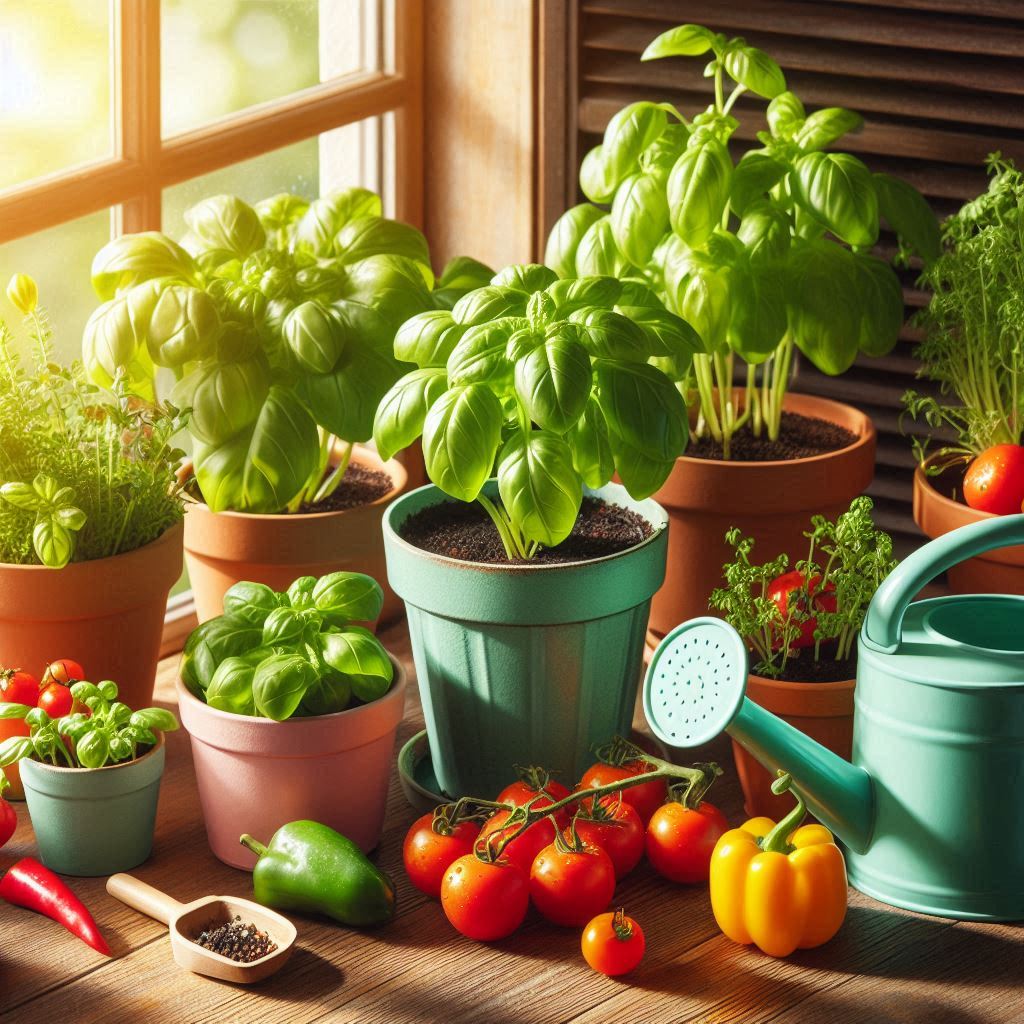
7.1. Soil Drying Out Quickly
One common challenge in vegetable container gardening is that the soil tends to dry out quickly, especially in smaller garden pots for growing vegetables. Due to the limited soil volume, water evaporates more quickly, which can stress plants and impact growth. To maintain proper moisture levels, use a high-quality potting mix specifically designed for container vegetables, which often includes moisture-retaining ingredients like coconut coir or peat moss. Mulching the soil surface is another effective strategy to prevent rapid evaporation and help keep soil moisture consistent. Easy vegetables to grow in pots, such as leafy greens, tend to do well with regular watering that keeps the soil evenly moist but not waterlogged.
Another way to prevent the soil from drying out too quickly is by using self-watering pots or trays. These systems allow the soil to absorb water as needed, ensuring that the best vegetables for container gardening receive consistent hydration. When growing veggies in pots, especially in warm or windy conditions, monitoring moisture levels and adapting your watering routine can make all the difference in maintaining a healthy patio vegetable garden.
7.2. Nutrient Deficiencies
Nutrient deficiencies are another common issue faced in container veg gardening, as the nutrients in the soil for container vegetables can be quickly used up by growing plants. Unlike garden beds, potted vegetables have limited access to nutrients, so replenishing them with the right fertilizers is essential. To identify nutrient deficiencies, observe the leaves—yellowing or stunted growth may indicate a lack of nitrogen, phosphorus, or potassium. Adding a balanced liquid fertilizer every few weeks can help correct these deficiencies and ensure the best container vegetable plants thrive.
Organic fertilizers or slow-release pellets are also excellent choices for maintaining the health of your potted vegetable garden. Choosing the right fertilizer not only boosts growth but also enhances the taste of vegetables like tomatoes and peppers. Regularly refreshing the soil in your pots and avoiding nutrient depletion will allow you to grow the best vegetables in containers successfully.
7.3. Pests and Diseases
Growing vegetables in containers can sometimes attract pests and diseases, even if container gardening tends to face fewer issues than traditional garden beds. Common pests like aphids, spider mites, and whiteflies can infest your potted vegetable garden, especially in densely planted areas. To control pests effectively, keep an eye on your plants and treat infestations early with organic insecticidal soap or neem oil. Natural predators like ladybugs can also be a great way to control unwanted pests.
Diseases can also be an issue in vegetable container gardening, especially if the plants are overwatered or lack proper air circulation. Ensuring that the containers have good drainage holes and that plants are adequately spaced will help prevent fungal diseases like powdery mildew or root rot. The best vegetables to grow in containers often have some resistance to these issues, making it easier to maintain a healthy patio vegetable garden.
8. How to Harvest Vegetables Grown in Pots
8.1. Timing the Harvest
Knowing when to harvest your vegetables is key to maximizing flavor and ensuring you get the most out of your container veg gardening efforts. Each vegetable has its own indicators for readiness. For leafy greens like lettuce and spinach, harvesting can start when the leaves are big enough to use, usually around four to six inches in height. These are some of the easiest vegetables to grow in pots because they mature quickly, and you can do multiple harvests throughout the season.
For root vegetables like carrots and radishes, their readiness can be gauged by gently pulling back some soil for container vegetables to check their size. Fruiting vegetables like tomatoes and peppers are best harvested when they reach full color and firmness, which ensures they are full of flavor. Harvesting vegetables at the right time helps maintain a productive potted vegetable garden and encourages new growth, especially for plants that produce multiple yields, such as herbs and leafy greens.
8.2. Harvesting Techniques
Using proper harvesting techniques is essential for keeping your vegetable container garden healthy and encouraging more growth. For leafy greens, it’s best to use a “cut and come again” method, where you snip the outer leaves while leaving the central growth intact. This approach allows you to enjoy continuous harvests from plants like spinach and kale. When growing veggies in pots, frequent but gentle harvesting helps maintain plant health and prolongs their productivity.
For fruiting vegetables such as tomatoes and bell peppers, use a pair of garden scissors or pruning shears to carefully cut the fruit off the plant, ensuring not to damage the stems or branches. This is especially important when working with small garden pots for growing vegetables, where plants might be more susceptible to breakage. Root vegetables like radishes and carrots should be gently pulled out by holding them firmly at the base, avoiding any damage to the surrounding soil structure. Maintaining careful harvesting practices is one of the keys to enjoying the best vegetables for container gardening throughout the season.
Proper harvesting not only allows you to enjoy fresh produce but also keeps your vegetable gardening in pots more productive. Whether you’re working with large planters or smaller pots on a patio, following the right harvesting techniques will ensure your container vegetable garden stays vibrant and fruitful.
9. Success Stories and Inspiration for Growing Vegetables in Pots
9.1. Urban Gardeners’ Stories
Many urban gardeners have successfully transformed their small balconies or patios into flourishing potted vegetable gardens. For instance, in cities where space is limited, people have turned to container veg gardening as a way to grow fresh produce right at home. Using the best vegetables to grow in pots, such as cherry tomatoes, lettuce, and herbs, they have created mini oasis gardens filled with vibrant colors and nutritious greens. One urban gardener shared how she was able to grow a variety of easy vegetables to grow in pots in her apartment, including radishes and kale, using simple garden pots for growing vegetables. Her success in growing veggies in pots became an inspiration for her neighbors, proving that even limited space can yield an abundance of fresh food.
Urban gardening stories are filled with innovative solutions for maximizing space and creating productive gardens. By using good potted vegetables to grow, like peppers and cucumbers, and focusing on container vegetable gardening techniques, these gardeners have been able to cultivate impressive yields. Their stories serve as a testament to the versatility of the best container vegetables and the resilience of people who are committed to growing their own food despite space constraints.
9.2. Community Gardening Projects
Community gardening projects have also embraced the concept of vegetable gardening in pots, especially in areas where available land is scarce. Community container gardens provide an opportunity for people to come together and grow fresh produce, regardless of their living situation. These projects often use the best container vegetable plants, including tomatoes, bell peppers, and leafy greens, to supply fresh produce to residents. Community members work side by side, sharing tips on the best veggies to grow in pots and demonstrating how easy vegetable plants to grow in pots can yield nutritious produce for all involved.
One community garden project in a city setting used soil for container vegetables and experimented with different container sizes to see which vegetables would thrive best. They found that container veg gardening was an effective way to involve people of all ages and backgrounds in producing food. The success of these community projects has been remarkable, with entire neighborhoods enjoying quick growing vegetables in pots and using them in local cooking classes and meal-sharing events. This shared approach to growing vegetables in containers not only helps to feed people but also fosters a sense of community and environmental responsibility.
These success stories provide inspiration and practical advice for anyone interested in starting a potted vegetable garden, whether on their own patio or as part of a community project. The stories highlight the many benefits of growing vegetables in a planter, from improving access to fresh produce to creating a positive, communal experience.
10. Conclusion
Growing vegetables in pots is a rewarding and accessible way for anyone, regardless of space limitations, to enjoy fresh, homegrown produce. By focusing on the best container vegetables, such as leafy greens, root vegetables, and fruiting plants, you can create a productive garden in a small area. The best vegetables to grow in containers are not only easy to maintain but also highly versatile, allowing you to have a consistent supply of fresh ingredients for your meals.
Whether you have a small patio or just a few sunny windowsills, container veg gardening makes it possible to grow a wide variety of veggies. With proper soil for container vegetables, adequate watering, and the right pot size, you can cultivate a thriving potted vegetable garden. Even beginners can start with easy vegetables to grow in pots, such as lettuce and herbs, to gain confidence in their gardening skills.
We encourage you to start your own vegetable gardening in pots and enjoy the benefits of having fresh, nutritious produce at your fingertips. The joy of seeing vegetables flourish in a planter and the satisfaction of harvesting your own food are unmatched. With the right preparation and a bit of patience, you can transform even the smallest outdoor or indoor space into a productive and beautiful potted vegetable garden.
Remember, growing veggies in pots doesn’t require a lot of expertise or equipment—just a willingness to get your hands dirty and a bit of care. Whether you’re looking for quick growing vegetables in pots or hoping to create a lush patio vegetable garden, the possibilities are endless. Start small, learn as you grow, and soon you’ll be enjoying the delicious rewards of your very own container garden.

